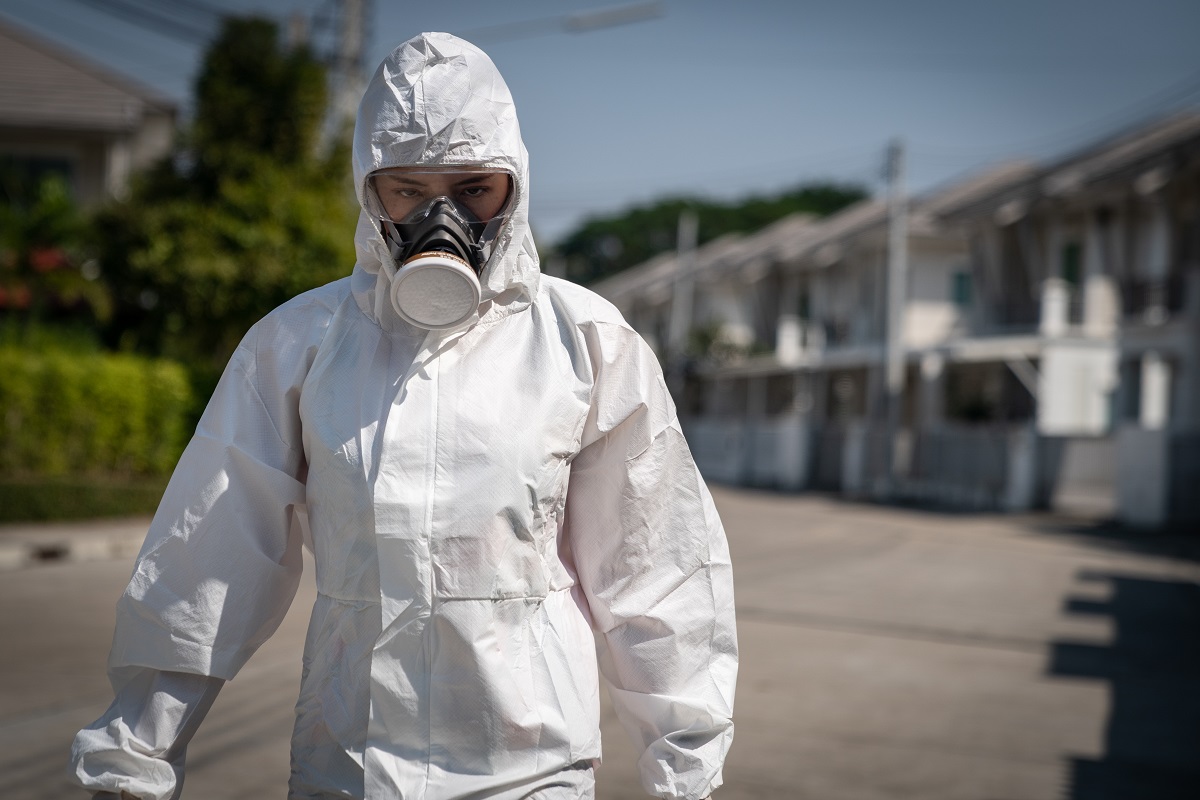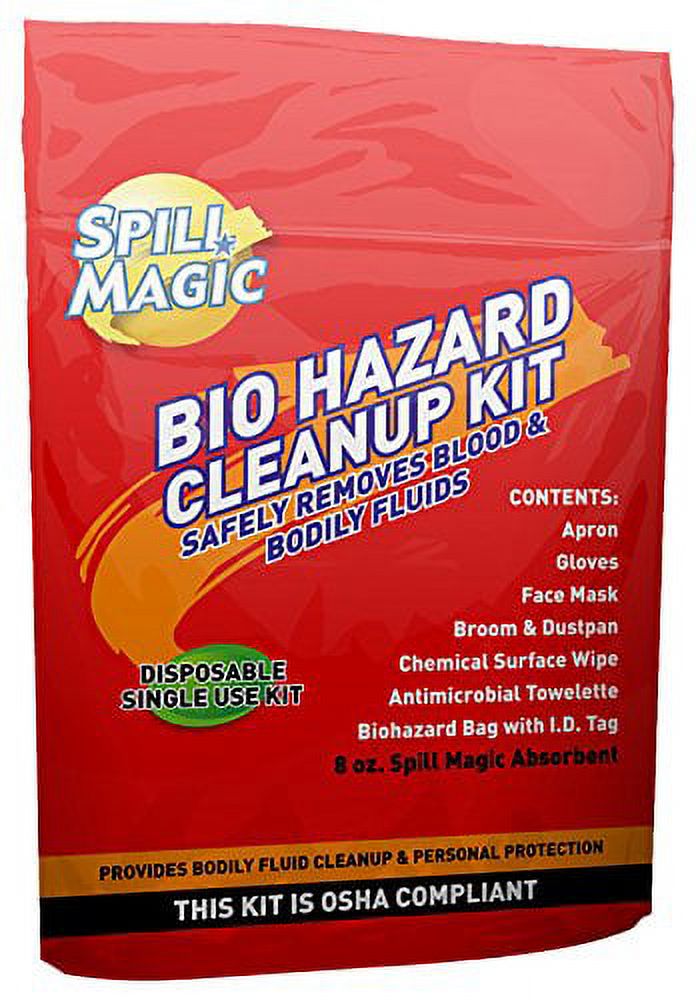Biohazard Removal: Safe Handling and Disposal of Hazardous Materials
Biohazard Removal: Safe Handling and Disposal of Hazardous Materials
Blog Article
Professional Biohazard Cleaning and Decontamination for Blood, Bodily Fluids, and Hazardous Products
The potential health and wellness threats linked with exposure to biohazards highlight the essential need for meticulous handling and thorough cleanup. As we browse the elaborate landscape of biohazard cleaning, understanding the nuances of policies, conformity, and the specific tools at play becomes critical in making sure a detailed and safe purification procedure.
Wellness Threats of Biohazard Direct Exposure
Direct exposure to biohazards poses substantial wellness threats that can cause severe effects for individuals and areas alike. Biohazards incorporate a large range of organic materials, consisting of blood, physical fluids, mold and mildew, bacteria, viruses, and various other possibly contagious products. When people enter into contact with these biohazards, whether with crashes, inappropriate handling, or ecological direct exposure, they encounter the threat of contracting serious diseases or conditions.
Among the main wellness risks connected with biohazard exposure is the transmission of infectious conditions. Bloodborne virus such as HIV, hepatitis B and C, and numerous microorganisms can be present in biohazardous products, posturing a direct risk to human health and wellness. Inhaling airborne biohazards like mold spores or entering call with polluted surfaces can additionally cause respiratory issues, allergies, and various other adverse health effects.
Furthermore, biohazard direct exposure can have long-term wellness implications, with some illness manifesting years after the first contact (Blood Cleanup). Therefore, it is vital to focus on appropriate biohazard cleansing and decontamination to minimize these health and wellness dangers and guarantee the security of people and areas

Specialized Training for Biohazard Cleaning
When it concerns handling biohazard cleaning effectively and securely, specialized training plays an essential duty in making certain correct purification procedures are adhered to. Biohazard cleaning calls for specific expertise and abilities to effectively minimize threats linked with bloodborne virus, bodily fluids, and harmful products. Experts learnt biohazard cleanup undertake rigorous guideline on how to securely manage, remove, and deal with biohazardous materials to protect against contamination and exposure.
Specialized training for biohazard cleaning covers a range of essential topics, including proper individual protective equipment (PPE) use, bloodborne virus recognition, decontamination strategies, and contaminated materials disposal methods. Individuals educated in biohazard cleaning are equipped with the necessary knowledge to analyze contamination degrees, determine prospective risks, and execute ideal clean-up treatments in compliance with regulatory criteria.
Continual training and education are paramount in the field of biohazard clean-up to stay updated on the most up to date decontamination innovations, security methods, and laws. By buying specialized training, biohazard clean-up specialists can effectively respond to emergency clean-up scenarios and guard both public wellness and the atmosphere.
Significance of Appropriate Purification Methods
Making use of appropriate decontamination techniques is vital in biohazard cleaning to effectively minimize and get rid of unsafe products wellness threats. Effective decontamination not just makes sure the removal of visible go to my site traces of blood, physical fluids, and other biohazards however likewise targets undetectable virus that may pose significant health and wellness threats otherwise properly eliminated. By complying with stringent purification methods, educated experts can dramatically lower the risk of exposure to dangerous microorganisms, infections, and microorganisms that might result in conditions or infections.
Correct purification methods entail making use of customized tools and disinfectants that are especially made to neutralize biohazards efficiently. Thorough cleaning and disinfection of polluted locations are necessary to prevent the spread of microorganisms and guarantee a risk-free setting for owners. Furthermore, the proper disposal of biohazardous waste adhering to purification procedures is important in protecting against contamination of other surface areas or individuals.

Tools and Tools for Safe Cleanup
When dealing with blood, bodily liquids, or hazardous click this products, biohazard cleaning specialists rely on specialized equipment to reduce exposure risks and thoroughly decontaminate the affected area. Additionally, biohazard cleansing kits consisting of disinfectants, absorbent materials, and biohazard bags are used to securely have and dispose of contaminated products.
Advanced cleaning tools like hospital-grade anti-bacterials, HEPA-filtered vacuums, and misting machines are employed to disinfect surface areas and get rid of biohazards properly. Specialized devices such as sharps containers and biohazard garbage disposal containers are used to securely manage sharp objects and biohazardous waste materials. By making use of the appropriate tools and tools, biohazard cleansing professionals can make sure a comprehensive cleanup process that focuses on safety and security and decreases health dangers for both employees and residents of the affected space.
Laws and Compliance in Biohazard Cleansing
Appropriate adherence to policies and compliance requirements is vital in biohazard cleansing to make sure the security of both workers and the environment. Government firms such as OSHA (Occupational Security and Wellness Administration) and the EPA (Epa) have developed details guidelines for biohazard cleanup procedures to lessen wellness threats and environmental contamination. These policies cover a variety of aspects consisting of the handling, transport, and disposal of biohazardous products, as well as the needed training and safety devices required for employees entailed in the clean-up process.
Biohazard cleaning companies must remain updated with these regulations to ensure that their operations satisfy the called for security requirements. Failure to comply with these guidelines can result in serious consequences, consisting of fines, lawsuit, and endangering the health of individuals and the atmosphere. By complying crime scene blood clean up with strict laws and conformity procedures, biohazard cleansing firms can properly reduce threats and make certain a complete and risk-free clean-up procedure for all events included.
Verdict
In conclusion, biohazard cleansing and purification need specialized training, correct methods, and adherence to guidelines. Direct exposure to blood, physical fluids, and dangerous products postures significant wellness threats, making it important to use the best tools and devices for risk-free cleaning. By adhering to rigorous methods and standards, experts can properly minimize the threats linked with biohazard exposure and ensure the security of both themselves and others.
As we navigate the intricate landscape of biohazard cleanup, recognizing the subtleties of laws, conformity, and the specialized devices at play comes to be essential in ensuring a safe and detailed decontamination procedure. (Blood Cleanup)
When it comes to taking care of biohazard clean-up successfully and securely, specialized training plays a basic function in ensuring correct decontamination procedures are adhered to.Making use of proper decontamination methods is important in biohazard cleanup to efficiently minimize and get rid of dangerous materials health threats. Furthermore, biohazard cleaning sets consisting of disinfectants, absorbent materials, and biohazard bags are used to securely dispose and include of polluted products.
Federal government firms such as OSHA (Occupational Safety And Security and Wellness Management) and the EPA (Environmental Protection Company) have actually developed specific guidelines for biohazard cleanup procedures to minimize health and wellness threats and ecological contamination.
Report this page